Foiled Scratch Off Posters
Sometimes greetings cards, business cards and invitations feature shiny, coloured foil-like detailing. This detailing is known as ‘foiling’ and it can add a real degree of luxury to your printed product.
At ScratchOffPosters.co.uk, we think that adding foil to your important design elements – like your poster title or company name – can really enhance your overall design.
But what is foiling? How is it achieved? And how can it improve your scratch off posters? We have the answers below!
.
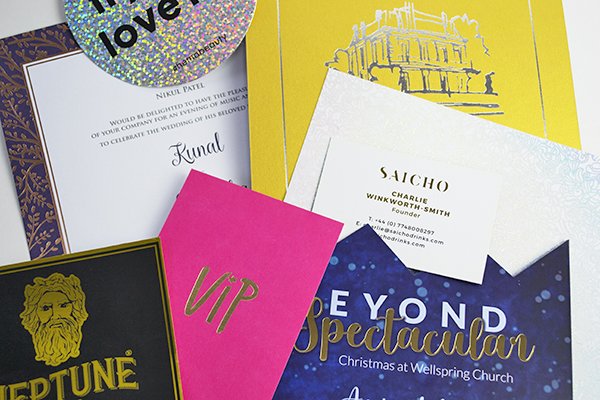
Digital Foiling
Digital foiling for scratch off products produces fast, cost-effective results. During this process, the digital foil machine is loaded with a digital artwork file – the machine then knows where the foiled elements should go on the design. Much like with any digital printer, the machine can be programmed to accurately ‘print’ the foil on the specific parts of your scratch off poster.
Digital foiling is beneficial:
It is cost-effective for short print runs. Digital foiling is a cheap option if you only need a small number of posters foiled.
Quicker production times. The machine can be programmed – and off it goes! This takes next to no time to start; it is much quicker to get going than creating a foil ‘stamp’ (see the method below).
The drawbacks of digital foiling:
Requires lamination. To achieve a really good finish, your product needs to be laminated. Luckily, it’s easy to select Gloss or Matt lamination at the pricing tool stage. (For more information on this, take a look at our lamination guide).
Limited presentation quality. With stamping (the other method, explained below) the stamp creates an indent as it foils. This provides a debossed effect. Digital foiling can only apply foil to the surface of your scratch off poster.
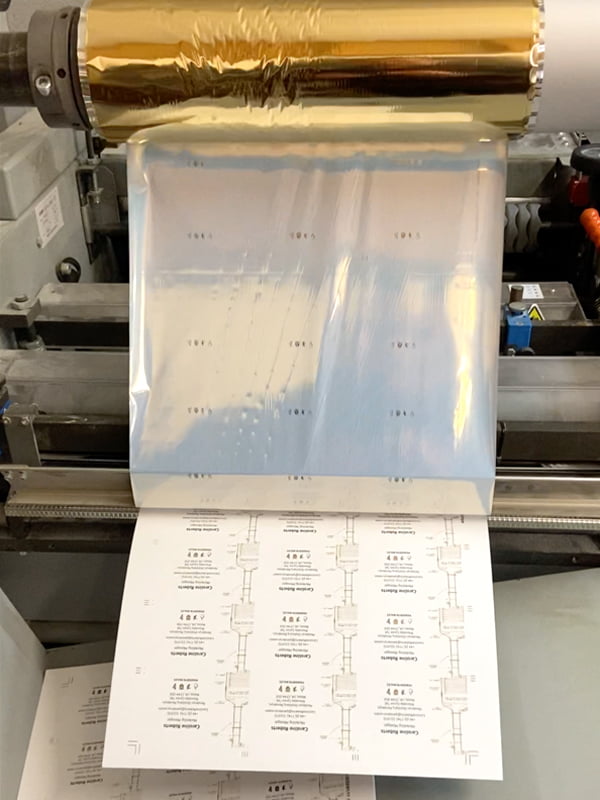
Digital foiling at Better Printing
Hot foil stamping
If you’re after premium foiling quality, hot foil stamping is the choice for you. This method uses a press which is loaded with a unique custom-made die, the paper product to be foil-stamped, and a sheet of foil which sits in between the two.
The die plate is heated up, then pressed onto the foil and printed item. Only the areas of the foil which come into contact with the die are transferred onto the paper.
Additional costs. You’ll also have to pay an additional fee for the assembly of your foiling die – this will vary depending on the size of the area you’re looking to foil on your printed items. (As mentioned above, the extra cost won’t be as much of a problem if you’re after a large quantity of foil-stamped items.)
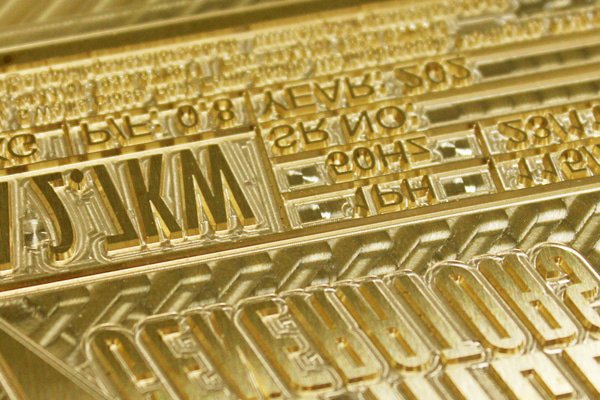
Custom brass die block for foiling
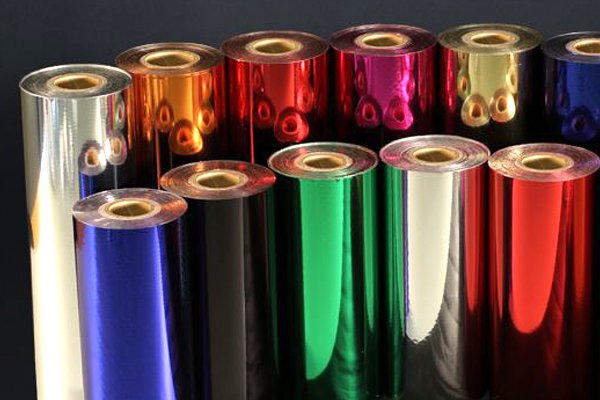
Coloured hot stamping foils
The pros of hot foil stamping:
More professional results. Hot foiling offers finer detailing for rendering small and/or thin text; and the stamping process slightly de-bosses the foiled elements which gives them a subtly-enhanced shimmer under the light.
More economical for longer print runs. While hot foil stamping is the more expensive option for small-quantity orders, the cost quickly balances out if you’re looking to print a large batch of items.
The cons of hot foil stamping:
Increased production times. Setting up a hot foil job takes longer due to the production time needed to create the die block. If you’re making an urgent order at the last minute, you’re better off going with digital foiling.
Whatever your choice, Better Printing can provide both digital foiling and hot foil stamping in-house from our Southampton print factory – so there’s no need to worry about extra outsourcing costs.
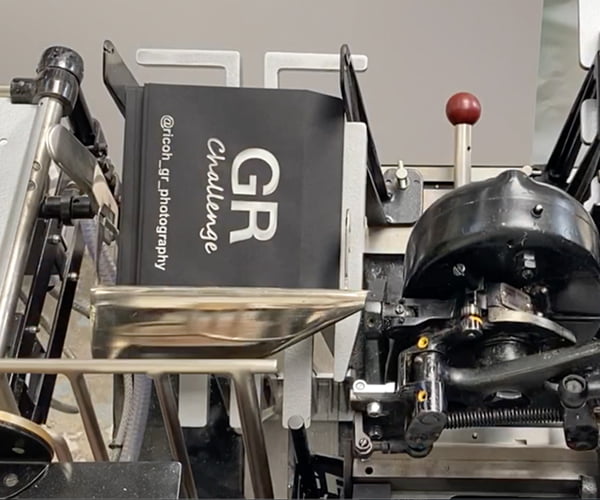
Hot foil stamping machine
If you have any additional questions about any type of foiling then call us on 023 8087 8037 or email us.
